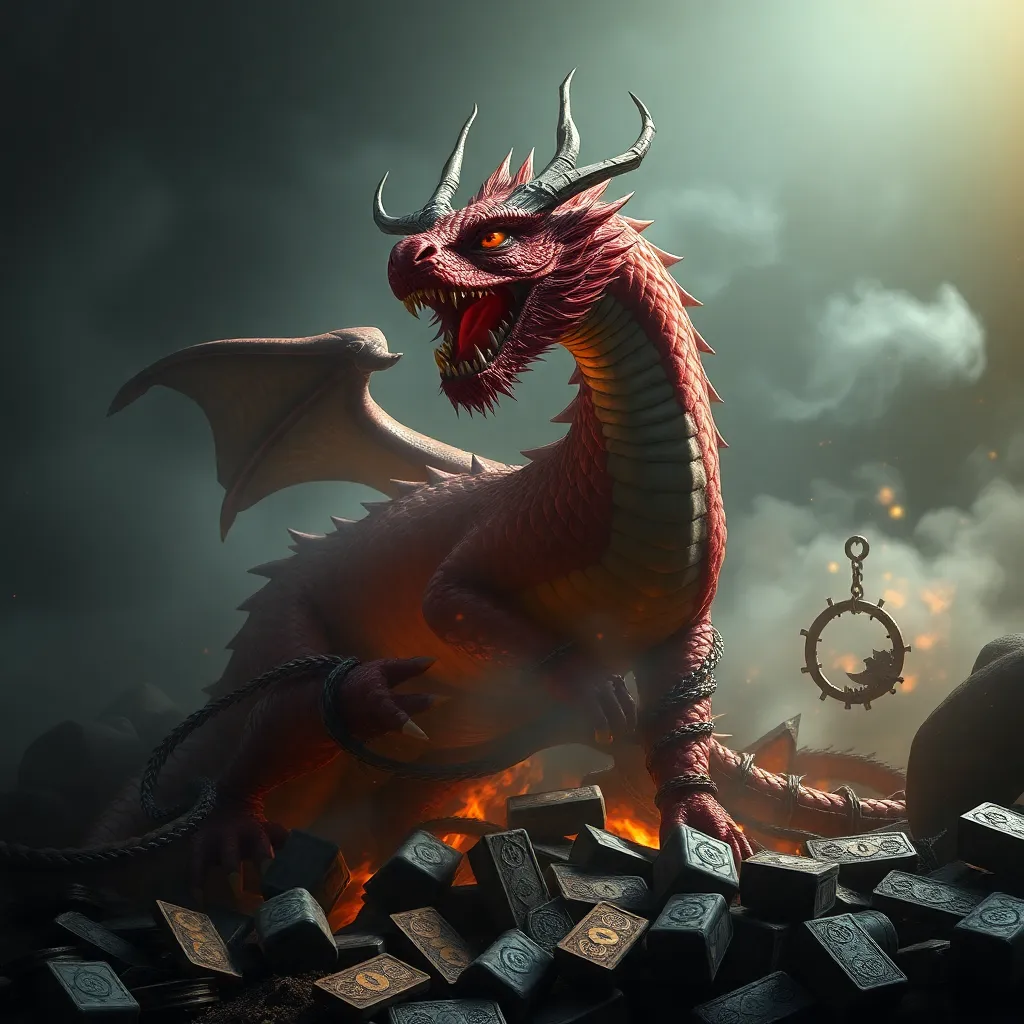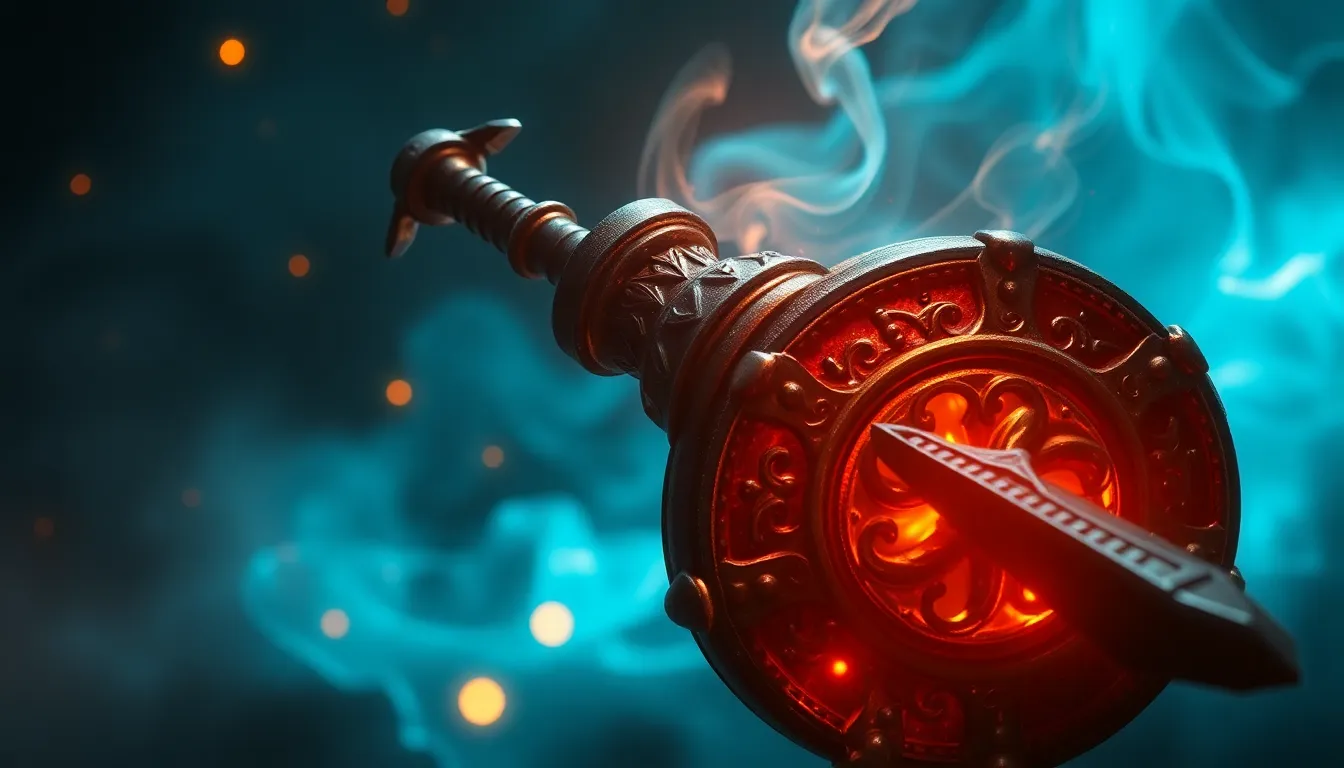The Dragon’s Treasure: Fafnir’s Hoard and the Mythology of Wealth
I. Introduction
The myth of Fafnir, a central figure in Norse mythology, captivates audiences with its rich narrative of transformation, greed, and the quest for power. Fafnir’s significance lies not only in his metamorphosis from a dwarf into a fearsome dragon but also in the treasure he guards—an embodiment of wealth that brings both fortune and ruin. This article explores the layers of meaning behind Fafnir’s tale, the symbolism of treasure in mythology, and the enduring lessons that arise from the pursuit of wealth.
II. The Legend of Fafnir
Fafnir originates from a family of dwarves, the sons of the dwarf king Hreidmar. The tale begins with the death of Hreidmar, who is killed by the god Loki, leading to the acquisition of a cursed gold hoard. Fafnir, consumed by greed, ultimately transforms into a dragon to protect his treasure, embodying the very curse that the gold carries. This transformation highlights a critical theme in Norse mythology: the corrupting influence of wealth.
A. Origins of Fafnir in Norse mythology
The story of Fafnir is found in several sources, including the Völsunga saga. Initially, he is depicted as a dwarf, but the allure of the cursed gold leads him to forsake his humanity. This transformation is both literal and metaphorical, representing how greed can devour a person’s essence.
B. Transformation from dwarf to dragon
Fafnir’s metamorphosis is a significant event that marks his descent into avarice. The physical change into a dragon signifies the ultimate corruption of his soul, as he becomes a creature of fear and destruction. This transformation warns of the dangers of unchecked desire.
C. The curse of the gold and its implications
The gold, originally belonging to the dwarf Andvari, is tainted by a curse that brings misfortune to its possessor. This curse serves as a reminder of the destructive power of greed, illustrating the idea that wealth can lead to ruin rather than happiness.
III. The Nature of Fafnir’s Hoard
Fafnir’s treasure is not merely a collection of gold and jewels; it represents the darker side of wealth. The hoard contains not only material riches but also the curse that accompanies it, making it a potent symbol in the narrative.
A. Description of Fafnir’s treasure
The treasure includes gold, precious stones, and artifacts, each shining with allure. However, its beauty is deceiving, as it is intertwined with the curse that brings despair. The allure of the treasure draws many, but only leads to destruction.
B. The role of cursed gold in the narrative
The cursed gold is a critical plot device, illustrating the notion that wealth can be both a blessing and a curse. Characters who seek the hoard inevitably face dire consequences, reinforcing the moral that the pursuit of wealth devoid of wisdom can lead to tragedy.
C. Symbolism of wealth and greed
- Wealth as power: The treasure grants immense power but at a cost.
- Greed leads to isolation: Fafnir’s transformation isolates him from his family and humanity.
- The destructive nature of desire: The story warns against the uncontrollable nature of greed.
IV. The Heroic Quest for the Hoard
Sigurd, a key hero in the Norse saga, embarks on a quest to confront Fafnir and claim the hoard. His journey is fraught with challenges that test his bravery and cunning.
A. Sigurd’s journey to confront Fafnir
With the guidance of the wise Regin, Sigurd prepares for the confrontation with Fafnir. He symbolizes heroism and the struggle against greed, standing as a contrast to Fafnir’s monstrous transformation.
B. The significance of bravery and cunning
Sigurd’s bravery is matched by his intelligence; he uses a clever strategy to defeat the dragon. This duality emphasizes that true heroism requires more than just physical strength—it requires wisdom and tactical thinking.
C. The role of fate and destiny in the quest
The concept of fate, or wyrd, plays a crucial role in Sigurd’s journey. The Norse belief in destiny suggests that despite Sigurd’s efforts, his path is preordained, highlighting the tension between free will and fate within the story.
V. The Consequences of Wealth
The tale of Fafnir provides rich moral lessons regarding wealth and its consequences. It serves as a cautionary tale about the dangers of avarice and the inevitable ruin that follows.
A. The moral lessons from Fafnir’s story
- Wealth can corrupt: The transformation of Fafnir illustrates how greed can taint one’s character.
- Isolation through greed: The pursuit of wealth can lead to loneliness and despair.
- Destruction of relationships: Fafnir’s greed causes rifts with his family, emphasizing the importance of connections over material gain.
B. Themes of avarice and destruction
The narrative captures the destructive nature of greed, as seen in Fafnir’s demise and the fate of those who seek the gold. It serves as a reminder that the pursuit of wealth can lead to moral decay and ultimate ruin.
C. Comparisons to other mythological tales of wealth
Similar themes of wealth and its consequences appear in various cultures, such as the Greek myth of King Midas, whose wish for gold becomes a curse. Such stories reinforce the universal truth about the duality of wealth.
VI. Fafnir’s Legacy in Literature and Popular Culture
Fafnir’s tale has left an indelible mark on literature and culture, inspiring countless adaptations and interpretations.
A. Influence on medieval literature and sagas
Fafnir’s story is a cornerstone of Norse sagas and has influenced medieval texts, including the tales of heroes and dragons throughout Europe, where dragons often symbolize greed and the perils of wealth.
B. Modern adaptations and reinterpretations
In contemporary literature and film, Fafnir’s legacy continues through various dragon characters that embody the themes of greed and destruction, showcasing the enduring nature of this mythological narrative.
C. The ongoing fascination with dragons and treasure
The allure of dragons and their treasure troves persists in modern storytelling, from fantasy novels to blockbuster films, reflecting humanity’s complex relationship with wealth and power.
VII. The Mythology of Wealth Across Cultures
The themes present in Fafnir’s story resonate across global myths, revealing a shared understanding of the nature of wealth and its implications.
A. Similarities with other dragon myths globally
Dragons in various cultures often symbolize wealth and power, such as the Chinese dragon, which represents prosperity, yet also warns against the consequences of greed.
B. The universal themes of greed and consequence
Myths from different cultures frequently explore the dual aspects of wealth—its ability to enrich lives and the potential for destruction. This universality reflects a fundamental aspect of human nature and societal values.
C. Insights into human nature and societal values
The recurring motifs of greed, power, and moral consequences in mythology provide insights into the values and beliefs of societies throughout history, emphasizing the lessons that wealth can teach.
VIII. Conclusion
Fafnir’s story serves as a powerful allegory about wealth, greed, and the consequences of desire. It illustrates the profound implications of the pursuit of treasure, highlighting that true wealth comes not from material possessions but from relationships, wisdom, and virtue. As we reflect on Fafnir’s legacy, it becomes evident that the lessons embedded in this myth remain relevant in today’s world, reminding us of the timeless struggle between desire and morality.



